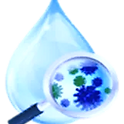
DISEASE DETECTIVES


Team Stranger Behaviours advanced ecology project focuses on the behavioural and evolutionary changes that Orcinus orca undergo due to indirect human exposure. Their main focus was on the southern resident killer whale populations (SRKW) that are found off the coast of British Columbia.
One of their key research questions focuses on how anthropogenic activities such as ecotourism can impact the behaviours and evolution of O. orca. More specifically, they are looking into the impact of noise pollution, such as sonar waves emitted from tourist ships, and how that can potentially change the behavioural interactions that O. orca have between other species within the marine ecosystem in terms of their communication and hunting behaviours. They are also looking into how anthropogenic noise pollution can influence their evolutionary pathways by potentially changing their ear canal morphology in regards to a change in the reception of frequency/wavelengths.
Our team’s advanced ecology topic - Urban/Ecosystem Ecology - merges effectively with their advanced ecology topic of Behavioural/Evolutionary Ecology. One of our team’s main research focus is how anthropogenic activities can increase the concentrations of chlorine in the environment which can have a negative impact on the aquatic ecosystem. In relation to team Stranger Behaviour’s research focus, our group found that polychlorinated biphenyls (PCBs) which contain chloride substituents are particularly harmful for SRKW populations. In fact, a recent study has found that exposure to PCBs poses a high level of risk for their population to collapse (Desforges et al., 2018).

Southern Resident Killer Whale (SRKW) - Orcinus orca.

Figure 1. Structures of different types of PCBs containing variable number of Cl- substituents.
But, first what are PCBs?
PCBs are highly toxic, human-made chemical compounds that were once very commonly used in industrial productions of oil paints, coolants and capacitors before being labelled as harmful and eventually being banned in the 1970s-80s (Welch, 2018). However, they are still present in the environment and even continue to leach from old ships (NGO Shipbreaking Platform, n.d.). This is because these compounds are long-lived, and hence, tend to persist in the environment (Desforges et al., 2018). They are still observed in high concentrations in many wildlife species due to biological cycling (Desforges et al., 2018). Due to these reasons, they are also labelled as "persistent organic pollutants".
Credit: Leyo. Source: https://en.wikipedia.org/wiki/Polychlorinated_biphenyl#/media/File:Dl-PCB_beschriftet.svg

Figure 2. Food-web interactions showing how PCBs get accumulated and magnified through the food chain leading to an eventual elevated concentrations of PCB in the killer whale (Orcinus orca) populations. Source: (Desforges et al., 2018)
PCBs and their impact on the Southern Resident Killer Whales (SRKW) populations
PCBs are found accumulated in high concentrations in their fatty tissues or blubber (Desforges et al., 2018).
As the infographic below shows, the PCB compounds present in the water are taken up by the phytoplankton and travel through the food-web reaching the orcas (Desforges et al., 2018). Across trophic levels, the concentration of PCBs magnifies, resulting in the orcas having a 10-20 fold higher PCB concentration as they are apex predators (Desforges et al., 2018).
These toxic compounds have been shown to impair the reproduction, endocrine and immune functions of mammalian species like orcas and even increase their risk of cancer (Desforges et al., 2018).
References
Desforges, J.-P., Hall, A., McConnell, B., Rosing-Asvid, A., Barber, J. L., Brownlow, A., Guise, S. D., Eulaers, I., Jepson, P. D., Letcher, R. J., Levin, M., Ross, P. S., Samarra, F., Víkingson, G., Sonne, C., & Dietz, R. (2018). Predicting global killer whale population collapse from PCB pollution. Science, 361(6409), 1373–1376. doi:10.1126/science.aat1953
NGO Shipbreaking Platform. (n.d.). Why Ships Are Toxic. https://shipbreakingplatform.org/issues-of-interest/why-ships-are-toxic/
Welch, C. (2018, September 27). Half the World's Orcas Could Soon Disappear—Here's Why. National Geographic. https://www.nationalgeographic.com/environment/2018/09/orcas-killer-whales-poisoned-pcbs-pollution/#close